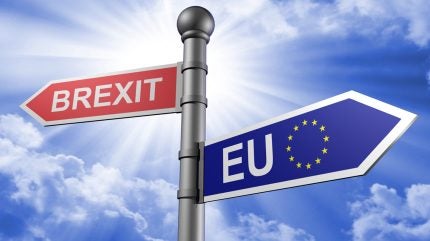
Walpole, the body representing British luxury industry, has urged governmental intervention to address the obstacles hindering trade with the EU for the luxury sector following Brexit.
The sector, valued at £81bn ($108bn), is facing challenges post-Brexit, as detailed in Walpole’s latest Trading with Europe report 2025.
The study, conducted by Frontier Economics, revealed that following the UK’s departure from the EU, luxury exports have suffered with an average drop of 43%.
This “Brexit effect” is substantial, given the industry’s role in sustaining over 450,000 jobs and contributing £14.6bn to the Treasury.
Fashion and accessories exports have taken the hardest hit, plummeting 64%, while interior design, home goods and craftsmanship exports have fallen by 50%.
The complexities of UK-EU trade relations have been exacerbated by increased tariffs from the US and diminished demand from Chinese consumers.

US Tariffs are shifting - will you react or anticipate?
Don’t let policy changes catch you off guard. Stay proactive with real-time data and expert analysis.
By GlobalDataThe study illustrates a shift in export dynamics, with EU exports dropping from 42% of total luxury exports in 2017 to 32% in 2022.
Despite this decline, the EU market remains paramount for UK luxury goods, outpacing both the US and Asia, which each account for 22% of exports and the Gulf region at 14%.
Post-Brexit trade barriers have introduced increased paperwork, higher costs and delays in exports due to new certification demands and customs intricacies.
It claims that these challenges have disproportionately affected brands that maintain high customer service standards. Inconsistent rule enforcement across EU member states and ports further complicates matters by introducing unpredictability into costs and timelines.
Complications with VAT refunds and reclamation processes have led some businesses to incur losses on returned items.
Marketing efforts have also been stifled by difficulties in distributing product samples to journalists and influencers. Changing sustainability standards and labelling requirements have also injected operational uncertainty into business planning.
In response to these challenges, some British luxury brands have set up distribution centres and commercial operations within the EU to redirect investment away from potential UK growth.
Walpole CEO Helen Brocklebank stated: “The British luxury sector has incredible growth potential, with a projection to reach £125bn by 2028.
“However, to achieve this ambition, we cannot afford to have one arm tied behind our back. Strong links and favourable trading with Europe remain essential to reaching this forecast, alongside our success in other global markets, and key to supporting craft-led and high value manufacturing in the UK.”
To address issues within the luxury industry, Walpole has made a series of recommendations to the UK government, including joining the Pan-Euro-Mediterranean Convention to support key exports, implementing a digital labelling system, negotiating better VAT terms with the EU and securing an SPS (Agreement on the Application of Sanitary and Phytosanitary Measures).



